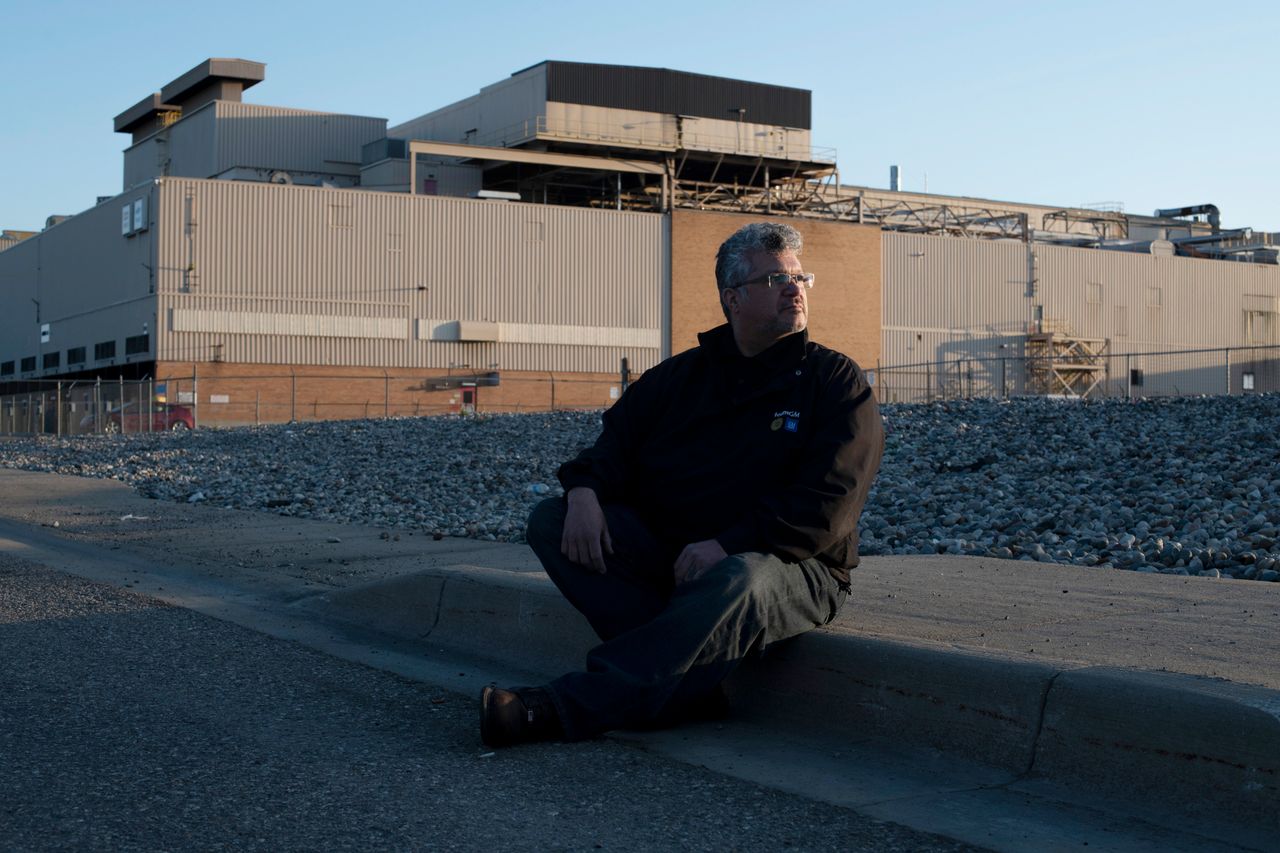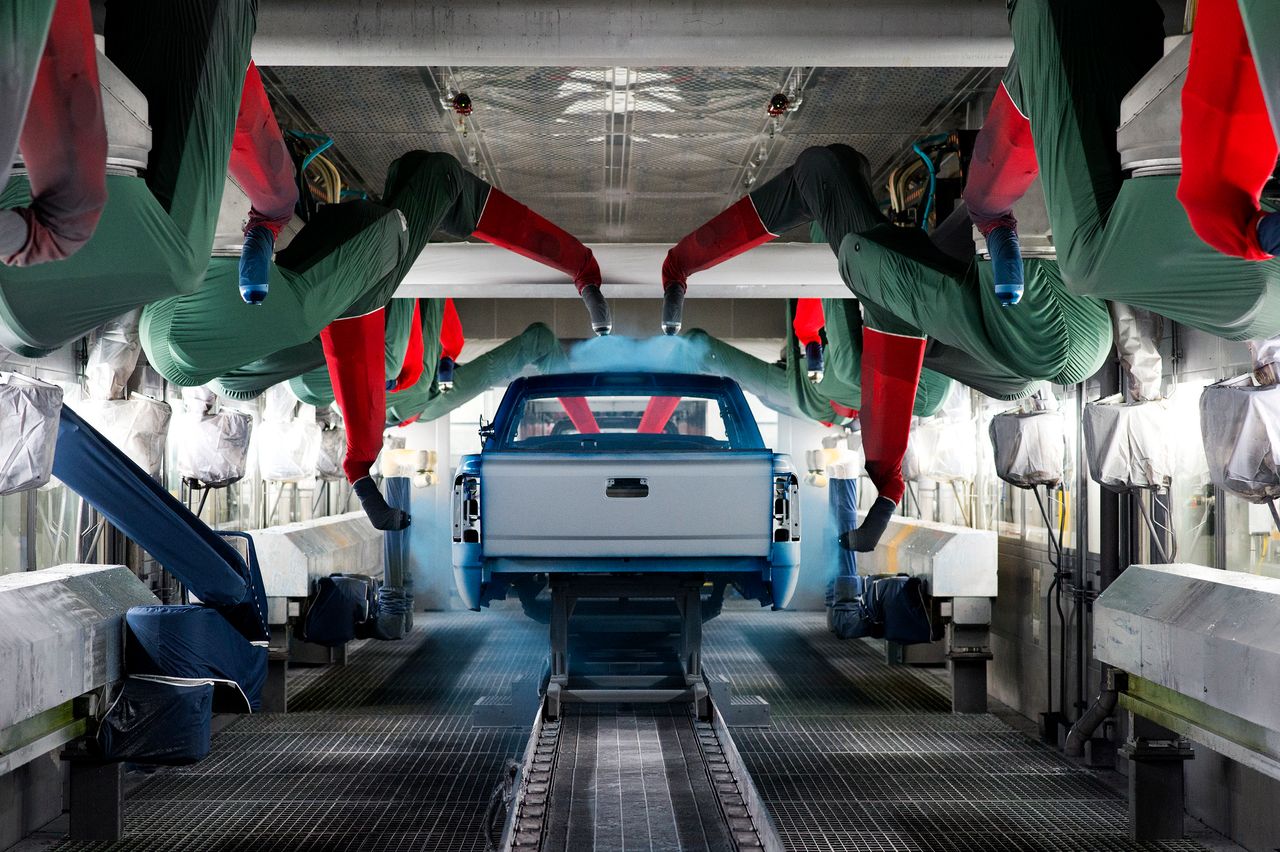FLINT, Michigan — In a diner just down the road from the factory where he works, Art Reyes is talking about assembly line jobs and the robots that have taken them over.
He pauses to order a couple of the city’s signature Coney dogs (hot dogs topped with chopped onion and a mixture of fine-ground beef hearts and spices). Coneys and the restaurants that still serve them are survivors of a more prosperous era, when Flint was known as a hub of industry and the automaker General Motors employed half the city.
Today, Flint is better known for violence, economic strife and an ongoing water crisis that exposed tens of thousands of residents to lead-tainted drinking water. It’s a far cry from the city’s heyday in the 1960s, when Flint was the epitome of the American dream and people flooded in for well-paid, secure manufacturing jobs. Even those without a college education could expect GM to provide them with what Reyes describes as a “good, solid, middle-class life.” Today, he notes, for the most part, “those jobs no longer exist.”
This job decline is true across the U.S., which saw nearly 6 million manufacturing jobs disappear from 2000 to 2010 — about a third of the sector’s total. Hardest hit were the Rust Belt states; Michigan alone lost 440,000 of these jobs.
Arguments abound in the Rust Belt as to where the manufacturing jobs went. Some support the narrative, spun loudly by Donald Trump, that free trade has allowed countries like China and Mexico to steal jobs; others blame unions.
There’s no easy explanation for what happened to places like Flint. But the influence of technology, particularly automation, is conspicuously absent from many debates taking place at the highest levels. Trump never mentions it when talking about reversing manufacturing job losses. His Treasury Secretary Steve Mnuchin, questioned last year about the threat of automation and artificial intelligence, said they were “so far in the future” that they were “not even on my radar screen.”
For Reyes, 50, a lifelong Flint-area resident who has worked at GM for 30 years, there’s no question that automation played an outsize role in changing the city permanently. He has watched tens of thousands of manufacturing jobs leave. He has also watched with dismay the appearance of “Make America great again” hats on the heads of his colleagues, stunned that they would buy Trump’s promise to bring back manufacturing jobs, which Reyes says are gone forever. While heavy industry still has a presence in the city, much of the work in factories like GM’s Flint Assembly Pant, where he is an electrician, is done by robots.
A 2015 Ball State University study supports Reyes’ view. Led by economics professor Mike Hicks, researchers found that U.S. manufacturing is, in fact, enjoying healthy growth. The problem? It isn’t benefiting human workers. Hicks and his co-authors found that productivity increases, largely driven by automation and technology, were responsible for almost 88 percent of manufacturing job losses in recent years. Machines allow factories to produce more with fewer people.
The upside, Hicks said, is that technology tends to create more jobs than it kills, and he thinks that will continue to be the case. But he cautions against confusing job creation with a return to old employment trends. “The new job will come about, but it may take two or three years, it might not be in the same place, and it certainly isn’t going to require the same set of skills,” he said.
As researchers like Hicks sound the alarm about a coming wave of machines and AI likely to upend many medium- and low-skill jobs, Flint could serve as an indicator for challenges to come. That is, if America would only pay attention.

In hindsight, there were warning signs about how machines might alter Flint. Back in 1960, the city was the setting for a speech by then-Sen. John F. Kennedy, who spelled out the potential effects of automation. He spoke of deserted industrial towns across West Virginia, Oregon and Wisconsin and of people reliant on meager government food handouts. This could be the future for many more people, he predicted, “unless we recognize that machines should provide a better life for people and not a life of desperation for men who are 45 years and 50 and who can’t find a job.”
At its peak in the 1970s, GM employed some 80,000 people in Flint; it now employs about 7,200. The company significantly curbed its operations in the city in the ’80s, shuttering plants or moving them to the suburbs or to other countries. As the auto industry declined, so did Flint’s population, from almost 200,000 in 1960 to roughly 100,000 today.
From 2005 to 2013, Reyes, in his role as a union leader, helped former GM factory employees through programs like Michigan’s No Worker Left Behind, a free tuition program to help people acquire training or degrees. Where people ended up, he says, “ran the gamut.” He knows of one man who worked with marketing giant Amway and retired with a solid living in Florida. But he also knows a man who, already burdened with family struggles, killed himself.
Reyes was helping people, but he was helping them through bleak times. He remembers going home one day and telling his wife that he’d had the worst day of his life, then arriving home the next day and saying the same thing again.
Overall, he says, people who went into training programs tended to make a better adjustment. “They had something to look forward to,” he says, adding that people who weren’t willing to move on “ended up very bitter and had a harder time.”
According to the McKinsey Global Institute, retraining workers will be a continuing ― and needed ― trend. A 2017 poll by the company found that about two-thirds of public, private and not-for-profit organizations saw “addressing potential skills gaps related to automation/digitization as at least a top-ten priority.”
Looking back, Reyes says, he finds it interesting that a lot of the people he helped find new jobs and skills didn’t go into technology or full-time work for big companies like GM. He saw a lot of them become independent contractors or entrepreneurs.
“They’d been burned by a major corporation,” he recalls. “The more time they seemed to have had in the shop, the more likely they went into business for themselves.”

If Flint has a lesson to teach about automation, it might simply be, “Get used to it.”
The new normal for manufacturing is on full display at the GM Flint Assembly Plant paint shop, where the drab aluminum shells of vehicles go to get their eye-catching colors. There are hardly any people on the floor. And yet the place is a whirl of activity. An assembly line moves parts past small herds of robotic arms that spray on the paint. A few workers at various stations add finishing touches while electricians sit at a lone desk monitoring the machines’ vital signs.
For two decades, Reyes tried to resist just this kind of automated workplace. He held various offices with the powerful United Automobile Workers union, bargaining on contracts at a time when automation was a chief concern. The attitude in the 1980s was that the robots were taking away jobs — and it was true. Thirty years on, however, his attitude toward technology has changed, even if he remains unhappy about what it has done to so many of his former colleagues.
“It’s not even an acceptance. It’s an acknowledgment that there’s a proper place for technology,” he says.
Though he no longer bargains for the union, he doesn’t want his fellow union members to kid themselves about the reality of modern manufacturing.
“I will continue to try to convince them that a job that was taken by a robot 30 years ago ... is not coming back, no matter what the president of the United States says,” Reyes maintains.
Nevertheless, manufacturing still has a future in Flint. It’s just a different kind of future, with a smaller workforce. GM seems to be hanging on to its few remaining workers in the city. Since the recession, the company has poured nearly $3 billion into its facilities here, modernizing and automating where possible. But the 300 people employed in the paint shop before a $600 million revamp two years ago have kept their jobs.
Plus, the improvements to the shop mean that people no longer have to climb into enclosed spaces and apply noxious chemicals to the car frames — which makes for a healthier work environment. In the 1960s, by contrast, humans performed every job, no matter how dirty or dangerous.

Some union leaders recognize they need to adapt to new technology. Eric Welter, the UAW Local 598 shop chairman, is a full-time bargainer and says his job is to make sure workers aren’t left in the dust. “It’s really important that we embrace technology and figure out how to be a meaningful part of it rather than fight it,” he says. “Because UAW and General Motors have a good partnership and my people make good wages, I need to make sure we are also efficient, otherwise we’ll price ourselves out of the market. Part of that efficiency is automation.”
As the face of Flint’s industry continues to change and it grapples with its water crisis, it is trying to distance itself from the image of a crumbling Rust Belt city. Its small downtown is undergoing a revitalization project and is now home to a number of trendy restaurants and shops.
Reyes wants to play a role in what’s next. In 2016 he was elected to the board of trustees at Flint’s Mott Community College, saying it needed to play a role in diversifying Flint’s economy. “I may not have been able to stem the flow as it happened so long ago,” he says, “but I sure as hell can help the next generation of workers feel less of the sting.”
For more content and to be part of the “This New World” community, follow our Facebook page.
HuffPost’s “This New World” series is funded by Partners for a New Economy and the Kendeda Fund. All content is editorially independent, with no influence or input from the foundations. If you have a tip for the series, send an email to thisnewworld@huffpost.com
